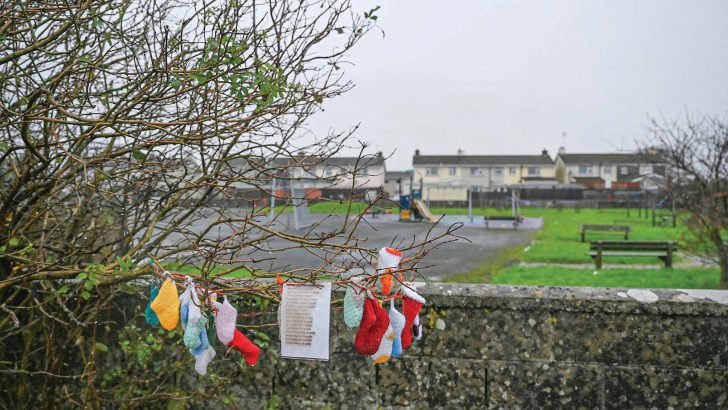Catherine Corless is greatly to be admired for her work revealing the extremely distressing facts about the Tuam Mother and Baby home, and she has now told her own story in an autobiography, Belonging.
Ms Corless rebuffs the suggestion, which was included in the report of the commission on Tuam, that “it was us, society, that should bear the brunt of what went on.” The responsibility and the blame is not “society’s”, she says: it is the specific responsibility of those who ran the institutions. (This was the Bon Secours order and Galway County Council.)
And yet, I cannot see how there isn’t a social dimension – that attitudes, values, and economic imperatives held by wider society didn’t play a part. Catherine Corless mentions how some children from Tuam were boarded out to uncaring farmers who used them as “slave” labour: this in itself is a social dimension.
Conditions
Catherine Corless’ investigation of the conditions which prevailed at Tuam was a brilliant achievement, unveiling the shocking evidence that children died of malnutrition. Yet most historians and anthropologists would conclude that there is always a ‘social dimension’ involved in the way groups act or are treated.
It may not amount to ‘responsibility’ for distressing events or cruelties, but there has to be a social contribution. Human beings do not live in a social vacuum. It was the Marxist thinker, Antonio Gramsci, (whose grave President Higgins recently visited in Rome) who made that point: we are deeply influenced by the culture around us.
Stigma
A British social historian, Jane Robinson, has written a valuable book – In the Family Way – about how unmarried mothers and their children were stigmatised until relatively recently. She takes the thread through family, law, economics, culture, churches, municipalities – to explore this situation (which also involved consistently higher mortality rates for British infants born out of wedlock).
Some 250,000 birth mothers in Britain are demanding an apology for coercive adoptions carried out there from 1945. But the question has arisen: who should apologise? So many agencies, with the backing of wider society, were involved.
Catherine Corless may reject the theme that “it was us, society, that should bear the brunt”. Yet we cannot erase the fact that wider society, and families themselves, did hold certain attitudes which are part of the picture of how the unmarried mother and her child were treated.
The Catholics in Boris’ background
Interesting details keep emerging about Boris Johnson’s Catholic heritage. His mother, Charlotte, who died recently aged 79, was the daughter of Sir James Fawcett, lawyer and Catholic convert, who helped draft the UN Declaration of Human Rights in 1948 – that fine document affirming that “everyone has the right to life, liberty and security of person”.
Charlotte went to school at Mayfield in Sussex, the girls’ school founded by Mother Cornelia Connolly of the Society of the Holy Child Jesus. (Cornelia Connolly was an American convert, had been married and had children, in a life involving much tragedy. She is a ‘Venerable’ and a candidate for sainthood. American sources sought to have her remains removed to Philadelphia, but protests from Sussex devotees have kept her where she died.)
Charlotte was sent to Mayfield because her older sister, Sarah, was a nun there.
There was a time when most leading Irish politicians had sisters and aunts who were nuns. I’d be surprised if any prominent member of the Oireachtas now has any such connection (Mary Robinson, once Senator, was probably the last generation to have aunts who were nuns). Unexpectedly, it’s now the British prime minister whose auntie was a religious sister.
Charlotte was expelled from Mayfield, which perhaps showed a rebel streak. But she baptised Alexander Boris in a Catholic ceremony, with Lady Rachel Billington (Lord Longford’s daughter) as godmother.
***
Nobody really likes the border in Ireland – even Edward Carson was against it – but traversing it reveals interesting flexibilities. For example, drivers seem to adjust seamlessly to switching kilometres for miles on road signposts. It’s not a problem to calculate in both.
From this I deduce that human beings can easily operate differing measurement systems. Pints or litres? Kilos or pounds? Use both metric and imperial, if they’re handy. The metric system is official in the Republic of Ireland but people still go for a pint, or describe someone being six feet tall.
In Britain, the imperial system is now being re-installed, post-Brexit, but I think people will just mix and mingle. ‘Two metres apart’ is understood for social distancing, and I don’t see a return to perches, roods and furlongs (though the racing community never discarded the furlong).
But dieters like losing ‘stones’. A stone conveys that nice idea of a real weight off your back…


 Mary Kenny
Mary Kenny Baby clothing and other items hang from a tree at the former site of the mother and baby
home in Tuam. Photo: CNS.
Baby clothing and other items hang from a tree at the former site of the mother and baby
home in Tuam. Photo: CNS. 